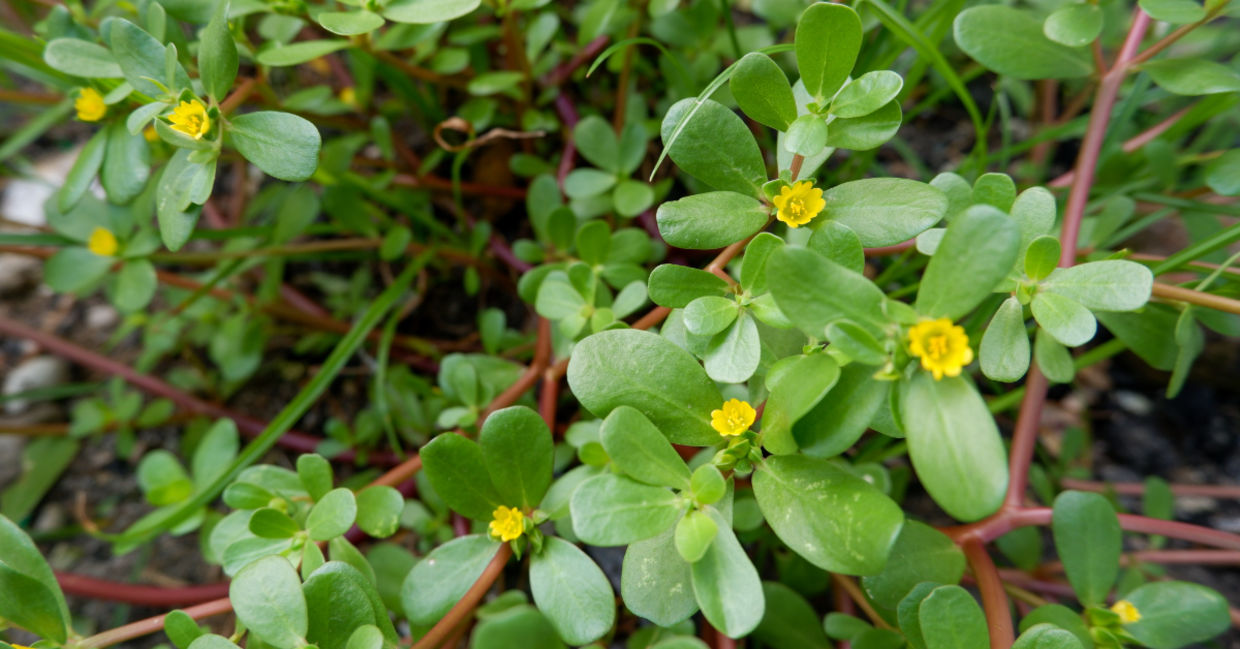
(Raja Sopan Purba / Shutterstock.com)
Most people think that weeds are something to be pulled up and cast aside. Now, purslane, may be the key to creating drought resistant crops in a world that is getting warmer.
Scientists at Yale University in New Haven, Connecticut found that purslane can create a novel form of photosynthesis (the process where plants use sunlight to make nutrients from carbon dioxide and water) that allows this hardy weed to endure drought conditions, according to a Yale news release. The study was published in the August 5, 2022 issue in the journal Science Advances.
“This is a very rare combination of traits and has created a kind of ‘super plant’ — one that could be potentially useful in endeavors such as crop engineering,” Yale’s Erika Edwards, professor of ecology and evolutionary biology and senior author of the paper said in the news release
What is purslane?
This common weed is a succulent that grows across the US, according to Acreage Life. Purslane has small round leaves, stems that have a reddish tint, and red, yellow, or pink flowers.
You can plant purslane in your garden just about anywhere because it even thrives in dry areas with high temperatures with minimal water. This hardy plant is worth cultivating because it has a host of benefits.
The plant is highly nutritious, contains a large amount of Omega-3s, and can be eaten raw as a salad green or cooked. You can steam it, sauté it, and even pickle it. You can even add it to stews or soups. This weed is actually a healthy part of any diet.
About the study
Purslane actually improves photosynthesis to the same C4 levels that are found in corn and sugarcane, making it very heat resistant, according to the news release. And because the plant is a succulent, it processes the same form of CAM photosynthesis as cacti that allows it to survive and even thrive on little water.
What makes purslane so valuable is the fact that it possesses both of these characteristics. The Yale team conducted an analysis of the genes in the leaves of the plant and found that they are totally integrated and operate in the same cells. Understanding how this works could allow scientists to engineer staple crops like corn to withstand prolonged droughts.
“In terms of engineering a CAM cycle into a C4 crop, such as maize, there is still a lot of work to do before that could become a reality,” Edwards said in the news release.
“But what we’ve shown is that the two pathways can be efficiently integrated and share products. C4 and CAM are more compatible than we had thought, which leads us to suspect that there are many more C4+CAM species out there, waiting to be discovered.”
Finding and growing new food crops that can survive the effects of climate change is a win/win for a planet that is getting hotter and drier. Who knew this pesky common weed could be the key?
YOU MIGHT ALSO LIKE:
7 Drought-Resistant Plants for Your Backyard
Making the Egyptian Desert Bloom Using Recycled Water
These Desert-Grown Burgers Contain a Trending Food Ingredient







